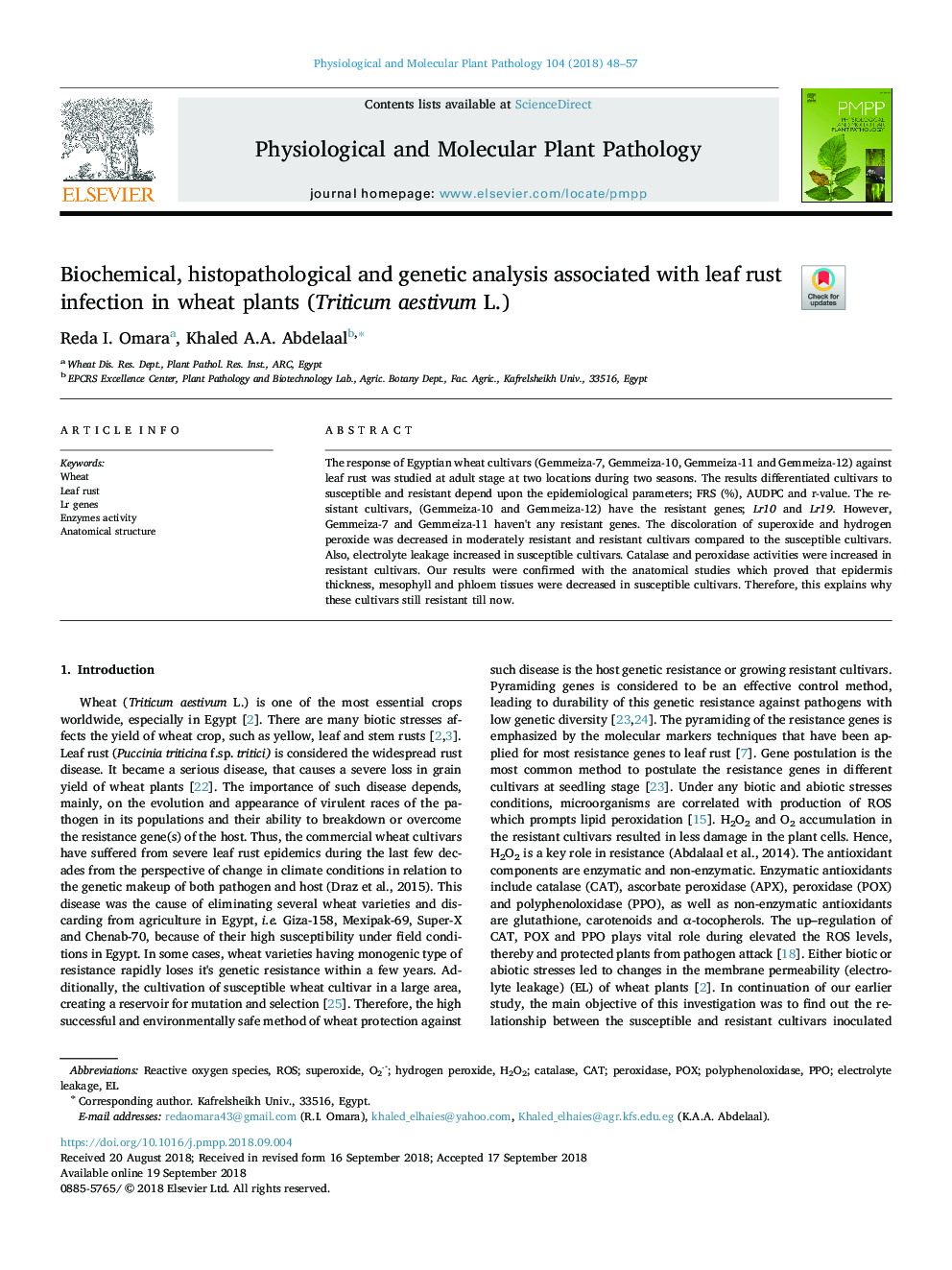| Article ID | Journal | Published Year | Pages | File Type |
|---|---|---|---|---|
| 11033732 | Physiological and Molecular Plant Pathology | 2018 | 10 Pages |
Abstract
The response of Egyptian wheat cultivars (Gemmeiza-7, Gemmeiza-10, Gemmeiza-11 and Gemmeiza-12) against leaf rust was studied at adult stage at two locations during two seasons. The results differentiated cultivars to susceptible and resistant depend upon the epidemiological parameters; FRS (%), AUDPC and r-value. The resistant cultivars, (Gemmeiza-10 and Gemmeiza-12) have the resistant genes; Lr10 and Lr19. However, Gemmeiza-7 and Gemmeiza-11 haven't any resistant genes. The discoloration of superoxide and hydrogen peroxide was decreased in moderately resistant and resistant cultivars compared to the susceptible cultivars. Also, electrolyte leakage increased in susceptible cultivars. Catalase and peroxidase activities were increased in resistant cultivars. Our results were confirmed with the anatomical studies which proved that epidermis thickness, mesophyll and phloem tissues were decreased in susceptible cultivars. Therefore, this explains why these cultivars still resistant till now.
Keywords
Related Topics
Life Sciences
Agricultural and Biological Sciences
Plant Science
Authors
Reda I. Omara, Khaled A.A. Abdelaal,
